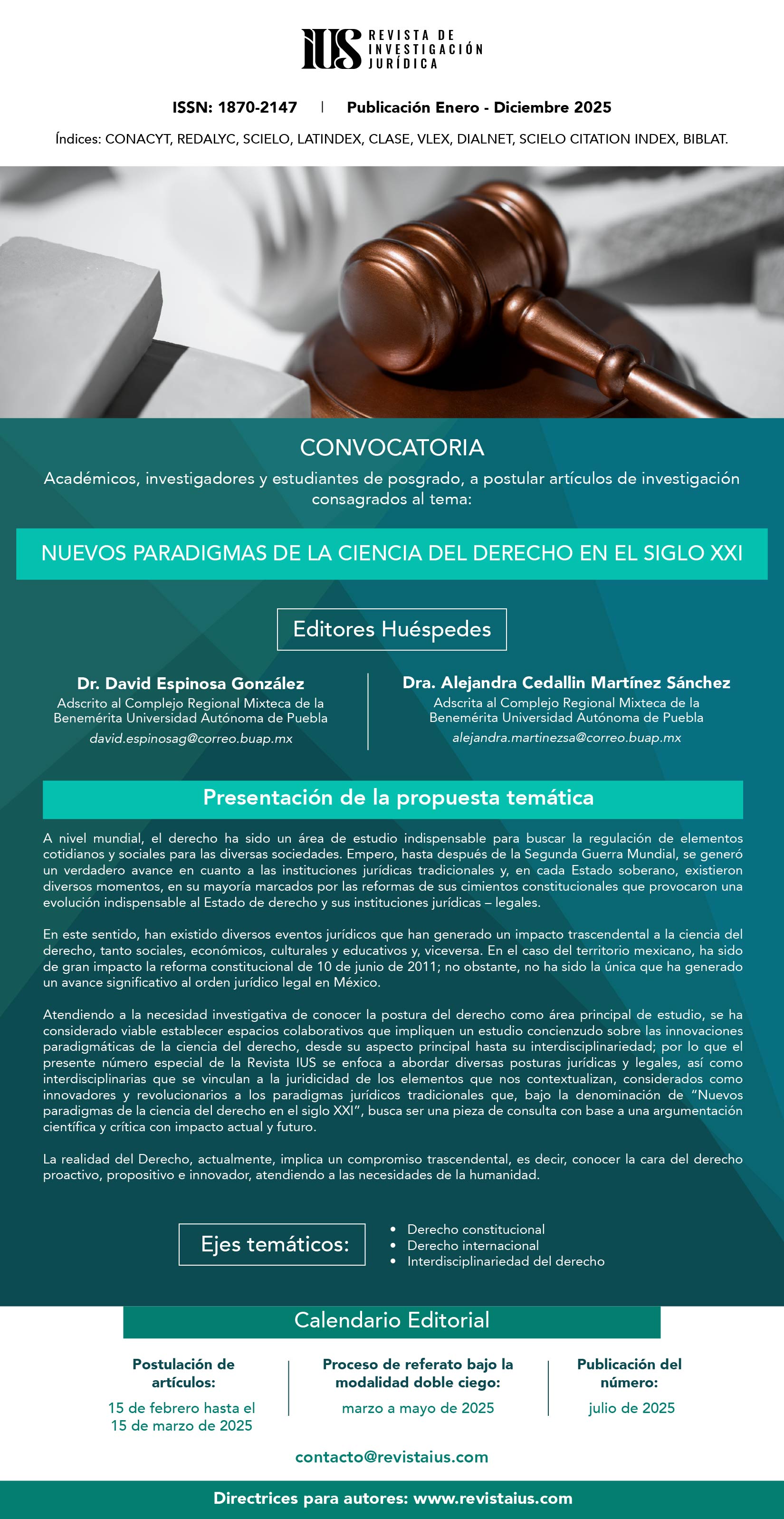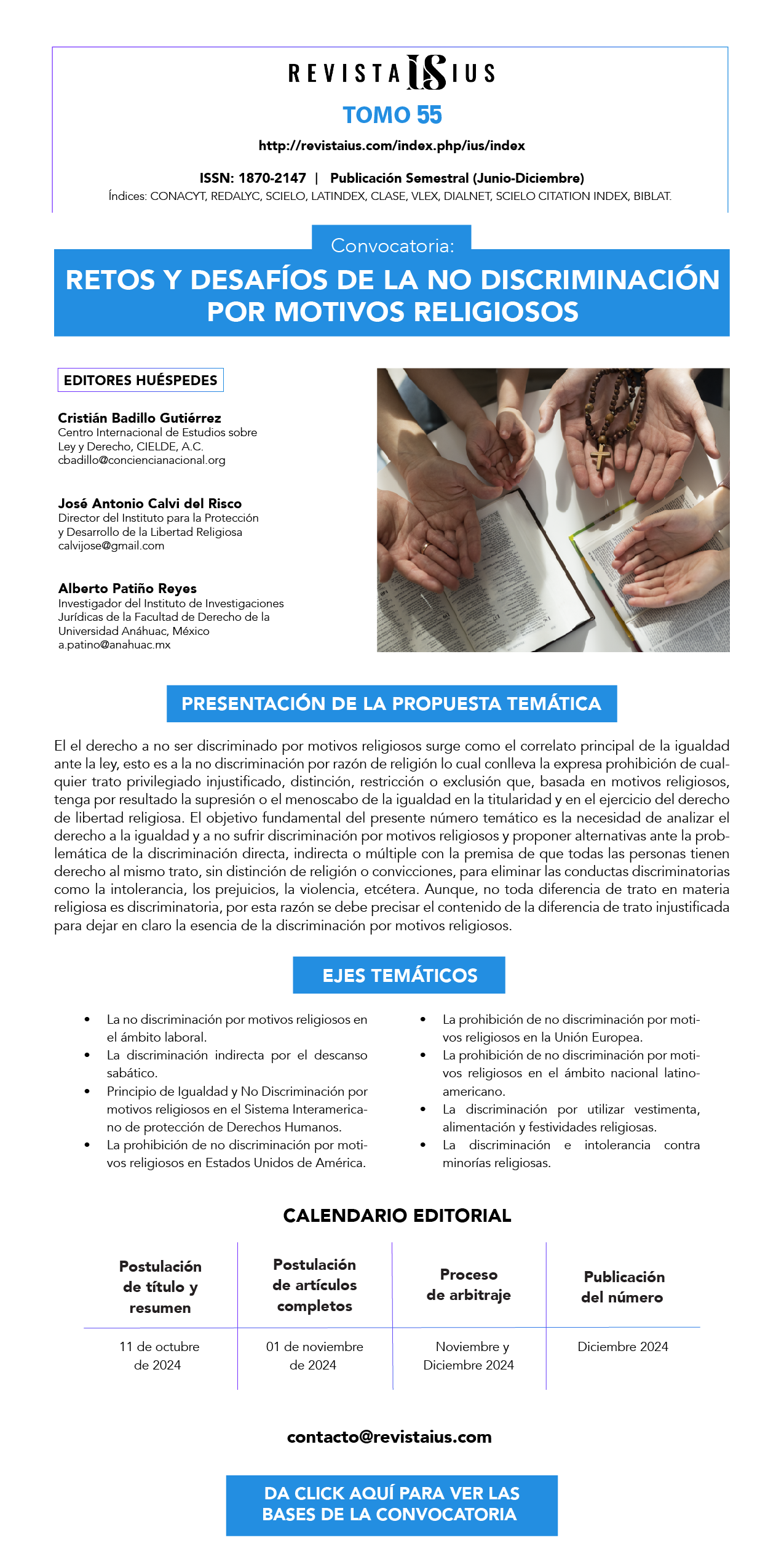LOS SISTEMAS ELECTORALES DESDE UNA PERSPECTIVA COMPARADA
DOI:
https://doi.org/10.35487/rius.v1i18.2006.168Abstract
Los sistemas electorales son concebidos en la teoría democrática como el único instrumento posible para determinar quiénes han de ser los representantes del pueblo y en qué número han de representarlo. Esta idea resume el sentido de los sistemas electorales en las democracias representativas. Dada la imposibilidad de realizar una democracia directa, por los motivos materiales de eficacia y eficiencia sentados por la teoría clásica de la representación, la democracia constitucional hegemónica es la representativa y ésta se basa en:
Un órgano que sirva como punto de encuentro entre los representantes y la soberanía popular, entre los diputados y la población: el Parlamento. Un sistema electoral que articule la representación; idealmente a través de la consecución de la igualdad perfecta, es decir, que el voto de cada elector tenga un mismo peso o traducción en peso parlamentario.
De la relación de estas dos premisas devendría, para el sistema electoral, la carga de asegurar que los representantes que se dan cita en el Parlamento guarden una relación cuantitativa directamente proporcional con lo dictado por los electores a través del sufragio. En definitiva, que el Parlamento sea una réplica a tamaño reducido de la soberanía popular movilizada electoralmente y a la que representa.
El sistema electoral que consigue esto se denomina “sistema proporcional integral”. Pero como bien ha demostrado la politología, este sistema no se da en ningún país. Por nuestra parte, trataremos los motivos fundamentales por los que los sistemas electorales se separan de este óptimo democrático.
Downloads
References
M. Duverger, Los partidos políticos, Fondo de Cultura Económica, México, 1981.
A. Downs, An Economic Theory of Democracy, New York, Harper & Row, 1957, p. 28.
Datos y referencias normativas en Keesing’s Record World Evens, Volumen 39, número 12, año 1993.
Abrams, B.A., “Political Power and the Market for Governors”, Public Choice,
, 1981, 521-529.
_______ y Settle, R. F., “Campaign-Finance Reform: A Public Choice Perspective”, Public Choice, 120, 2004, 379-400.
Ansolabehere, S., De Figueiredo, J. y Snyder, J.M., “Why Is There So Little Money
in U.S. Politics?”, Journal of Economic Perspectives, 17, 2003, 105-130.
Bronaronnars, S. y Lott J. Jr., “Do Campaign Contributions Alter How Politicians
Votes? Or Do Donors Support Candidates Who Value the Same Things That
they Do?”, Journal of Law and Economics, 40, 1997, 317-350.
Cotteret, J.M. y Emeri C., Los sistemas electorales, Oikos-Tau, Barcelona, 1973.
Crain, W.M., Deaton, T. y Tollison, D., “Legislators as Taxicabs: On the Value of
Seats in the U.S. House of Representatives”, Economic Inquiry, april, 1977,
-302.
_______, Tollison, D., “Attenuated Property Rights and the Market for Governors”,
Journal of Law and Economics, april, 1977, 205-211.
Douglas W.R., Leyes electorales y sistemas de partidos, Editorial Citep, 1977.
Downs, A., An Economic Theory of Democracy, New York, Harper & Row, 1957.
Duverger, M., Instituciones políticas y derecho constitucional, Ariel, Barcelona,
Finer, S.E., Política de adversarios y reforma electoral, Fondo de Cultura Económica, México, 1980.
Gifford, A. y Santoni, G.J., “Politicians and Property Rights: An Analysis of the
Relationship Between Campaign Expenditures and Wage and Price Controls”,
Public Choice, 33, 1978, 71-74.
Lott, J. Jr., “A Simple Explanation Why Campaign Expenditures Are Increasing:
The Government is Getting Bigger”, Journal of Law and Economics, 43, 2000,
-393.
Nohlen, D., Los sistemas electorales del mundo, Centro de Estudios Constitucionales, Madrid, 1981.
Palda, F., “The Determinants of Campaign Spending: The Role of the Government
Jackpot”, Economic Inquiry, 30, 1992, 627-638.
Stratmann, T., “What Do Campaign Contributions Buy?: Deciphering Causal Effects of Money and Votes”, Southern Economic Journal, 57, 1991, 606-620.
Published
Issue
Section
License
Revista IUS, published by the Legal Sciences Institute of Puebla A.C., is distributed under the Creative Commons Attribution-NonCommercial 4.0 International (CC BY-NC 4.0) license.
We authorize collaborators to upload a copy of their published work on their personal websites or any Open Access repository, provided that Revista IUS is specifically cited as the original source, indicating the year and issue of the respective example and adding the link to the webpage on which this publication can be freely consulted in toto and without charge: http://www.revistaius.com
Readers are free to:
Share, copy and redistribute the material via any medium or format.
The licensor cannot revoke these freedoms as long as you follow the license terms.
Under the following terms:
Attribution: You must give appropriate credit, provide a link to the license, and indicate if changes were made.
You may do so in any reasonable manner, but not in any way that suggests the licensor endorses you or your use.
NonCommercial – You may not use the material for commercial purposes.
If you remix, transform or build upon the licensed material, its distribution is not permitted.
Charges for managing articles: Revista IUS will not charge for receiving, processing or publishing articles (Article Processing Charge, or APC) submitted by authors.





